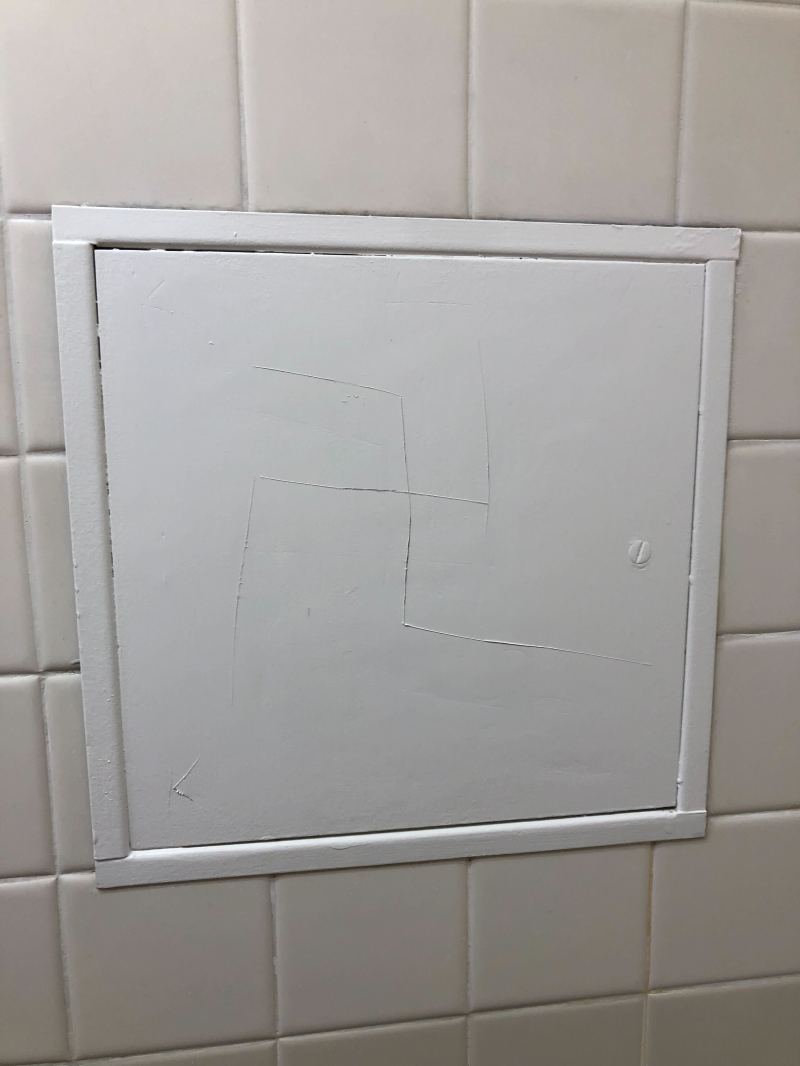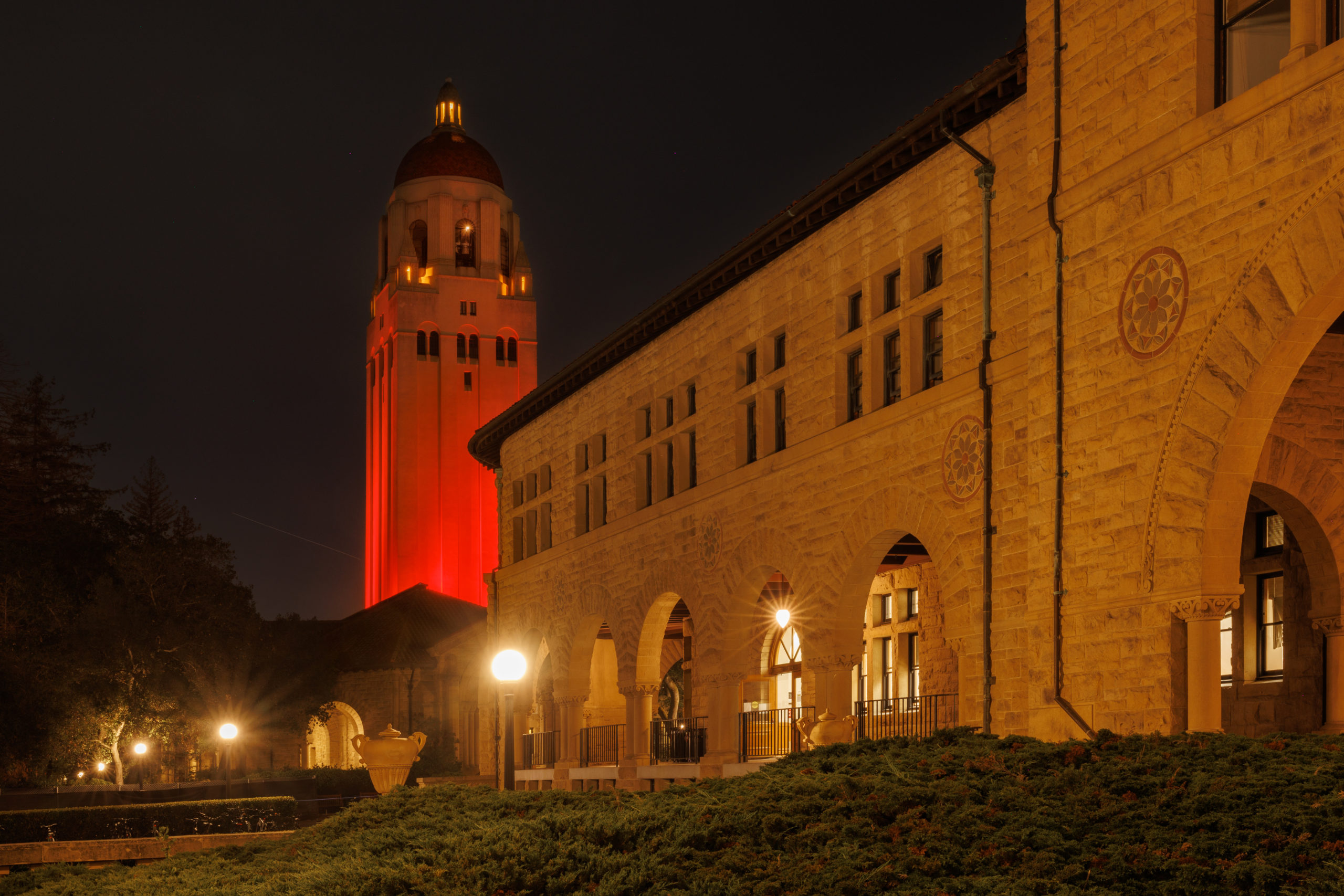This article contains references to antisemitism.
A swastika was discovered in one of the first floor bathrooms of the History Corner on Wednesday, near the end of the week-long Jewish holiday Passover. This incident marks the second recent act of antisemitic vandalism after a mezuzah was ripped from the doorframe of an undergraduate residence on April 3, according to a Protected Identity Harm Report.
The swastika was found carved into a white, metal panel in the History Corner bathroom, according to photos obtained by The Daily. The swastika has since been painted over by the University.
The act of antisemitic vandalism comes on the heels of University President Marc Tessier-Lavigne’s appearance at last week’s Passover Shabbat, held by Hillel. Addressing members of Stanford’s Jewish community at the dinner on April 7, Tessier-Lavigne said, “I want to make it very clear that we will not tolerate antisemitism and the symbols of antisemitism here on campus. It is something we need to eradicate.”
University spokesperson Dee Mostofi wrote in a statement to The Daily that the University is “deeply disturbed by the most recent antisemitic incident at History Corner.” The University has filed a Protected Identity Harm Report in response to this event and has contacted SUDPS.
The Daily also reached out to the Stanford University Department of Public Safety (SUDPS) for comment, which confirmed that SUDPS is investigating the matter.

In an email to The Daily, Rabbi Jessica Kirschner commended University leadership for continuously speaking out against antisemitism on campus, but also emphasized the need for “a clear plan for assessing and addressing antisemitism on campus,” as well as consistently including Jews and other marginalized groups in anti-bias work.
Kirschner also emphasized the strength of Stanford’s Jewish community, especially in the face of so many antisemitic incidents.
“We have a very strong community of Jews and allies on this campus, and are not intimidated by this kind of action. From joyful gathering, to deep learning, to spiritual resilience and emotional support, students have each other…None of us should feel alone,” Kirschner wrote.
The University’s Jewish community has faced a number of acts of antisemitism during this academic year. In fall quarter, a mezuzah was ripped off the doorframe of two Jewish graduate students. In the winter quarter, there were multiple instances of antisemitic vandalism. On Feb. 28, swastikas, anti-Black slurs and the words “KKK” were discovered in the men’s bathroom of the History Corner. On March 3, in a different bathroom in Main Quad, the word “KKK” was discovered on the door surrounded by swastikas. On April 3, another case of antisemitic vandalism took place in an undergraduate residence, where a drawing of Hitler and several swastikas were found outside the door of a Jewish student.
Another incident which drew criticism and scrutiny occurred during winter quarter, when a photo circulated of an undergraduate student reading “Mein Kampf,” the autobiography of Hitler, with her eyebrows furrowed, a finger on her chin and an expressive look of contemplation.
The fall quarter also presented challenges for Jewish students seeking accommodations to observe religious celebrations. In October, the University also apologized in the fall for limiting enrollment of Jewish students in the 1950s.
“The Jewish Student Association (JSA) is deeply saddened to hear of an additional antisemitic incident on campus — one of multiple that have occurred over the last several weeks,” Kelly Danielpour ’25 wrote in an email to The Daily. “These recurring incidents demonstrate that antisemitism at Stanford is not an isolated issue but rather one that is continuous and pervasive.”
Danielpour also wrote that she hopes for continued collaboration between various University stakeholders to “develop policies and programs that meaningfully address discrimination towards the Jewish community.”
“Every individual at Stanford, no matter who we are, has a role to play in shaping the culture of our community,” Kirschner wrote in her email. “There is a lot of darkness in the world — we can choose to be overwhelmed by it, or we can choose to light a candle and push it back…The more of us there are and the higher we hold our lights, the better we will all feel, the healthier our shared culture will be, and the less space there will be for the jerks and the creeps to act this way.”
